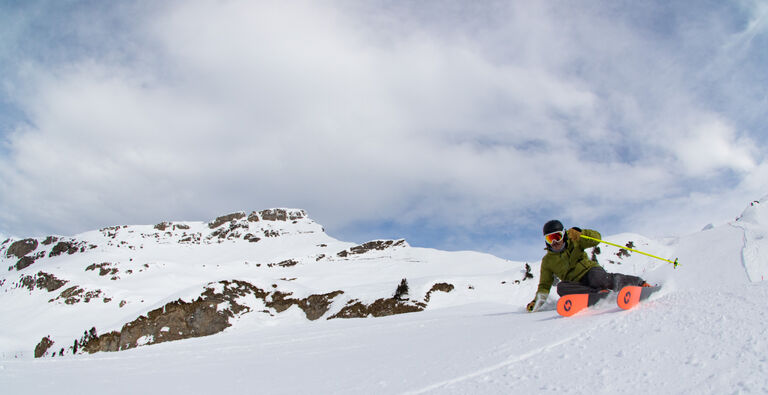
Christy Sports – Ski Buying Guide
How to Choose the Right Bindings for your Skis
Choosing ski bindings can sometimes be an afterthought when purchasing new skis, but they are a critical piece of equipment. Having the right bindings to ensure compatibility with your skis and boots is crucial to an enjoyable day out on the mountain. There are four main components in choosing the correct ski binding: the type of skiing the binding will be used for, the brake width, boot compatibility, and the DIN range. Follow this guide to select the right binding for your needs!
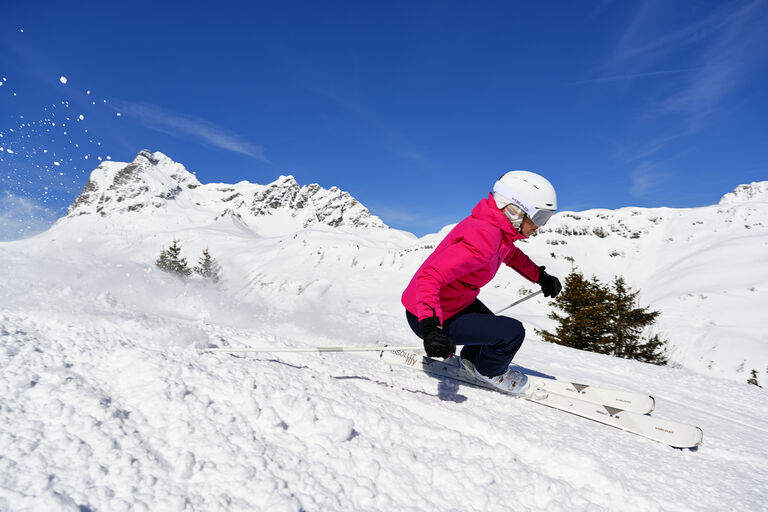
TYPES OF BINDINGS
The three main types of bindings used today are traditional alpine bindings, tech bindings for alpine touring, and hybrid bindings. Traditional alpine bindings are by far the most common and are used for downhill skiing only. They are safe, durable, reliable, and simple. Tech bindings are used for backcountry ski touring. Instead of stepping into the binding like a traditional alpine binding, tech bindings connect the boot to the ski using pins that attach at the heel and toe. The heel pins can release so that the boot just pivots from the toe for uphill travel. Tech bindings are far lighter than traditional alpine bindings and allow for easy ski touring capability. They do not provide the elastic travel and consistent releasability of alpine bindings. To use tech bindings, you must have boots with tech inserts. Hybrid bindings like the Salomon Shift or Marker Duke PT combine the capabilities of both tech bindings and alpine bindings. They provide the uphill touring capability of tech bindings, albeit in a heavier and more complex package. They also provide the releasability and elastic travel of alpine bindings, making them safe and comfortable to routinely use for downhill skiing. Hybrid bindings are a great choice for someone who wants one boot, binding, and ski for both alpine touring in the backcountry and downhill skiing at the resort.
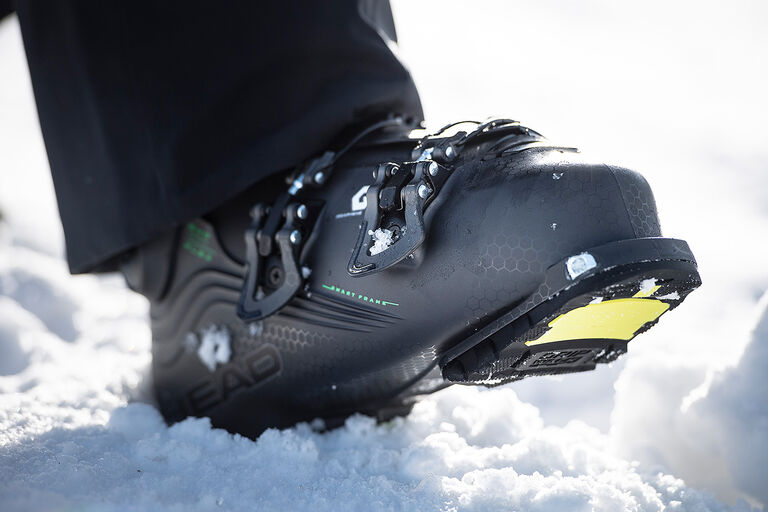
SKI BOOT COMPATIBILITY
It is essential to confirm boot and binding compatibility when purchasing new bindings (or boots). The different binding types described above are designed to work with specific types of boot soles. Ski boot and binding manufacturers follow the International Standards Organization (ISO) standards for specific boot sole shapes and dimensions. Boots with a flat plastic sole stamped with ISO 5355 will work with all traditional alpine bindings. Today, boots with GripWalk soles have become widespread, but they must be used with GripWalk compatible bindings. Bindings that are multi-norm certified (MNC) will work with ISO 5355 soles, GripWalk soles, and ISO 9523 certified touring soles. These standards can be very confusing, so to be sure that your boots and bindings are compatible, seek out help from a certified ski binding technician in a Christy Sports store. We highly recommend that all binding mounts, remounts, and adjustments are performed and tested by a professional binding manufacturer certified technician.*
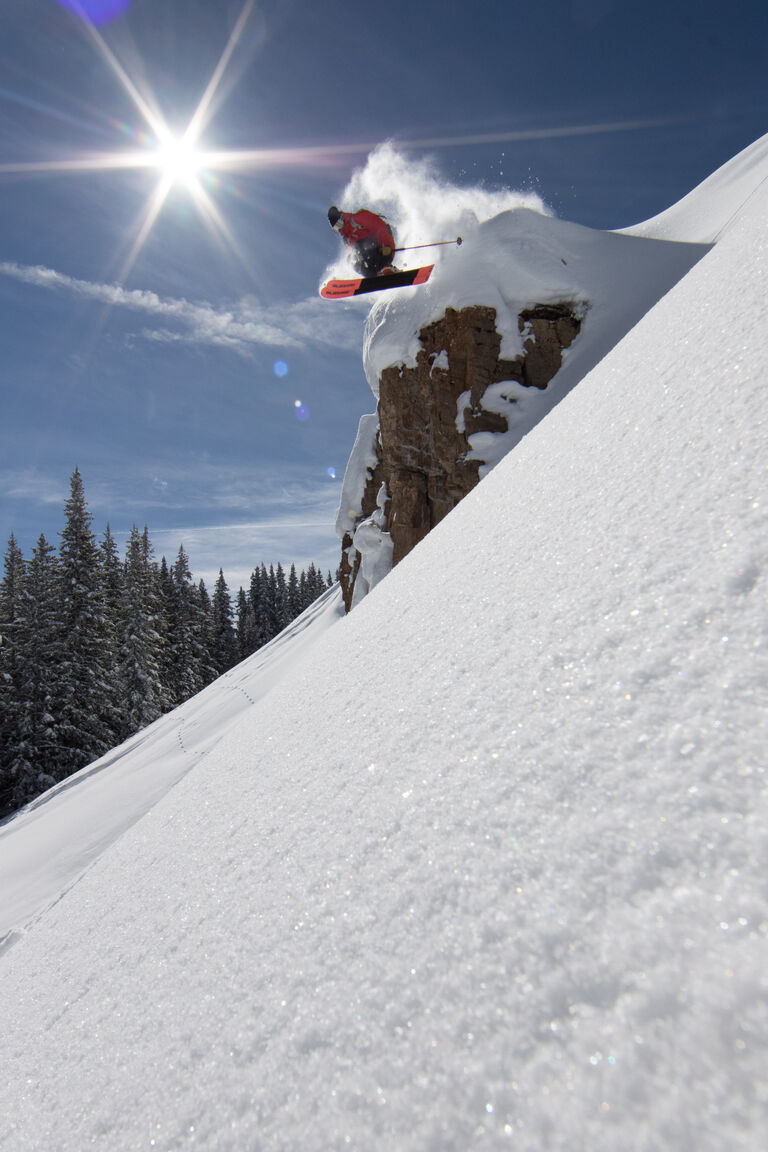
BRAKE WIDTH
The brake is the metal piece on the heel of the binding that juts out from the ski on either side. Brakes help to stop your skis from sliding away in the event of a release, or simply if you are clicking into your skis on a slope. The brake must be wide enough to protrude beyond the waist width of your ski. For example, if the width of your ski is 90mm, you will need a binding with a brake of at least 90mm. You do not, however, want the brakes to be too big for your skis because they will protrude too far from the ski and present a hazard. As a rule of thumb, do not use a brake that is more than 10mm wider than the width underfoot of your ski. Some, but not all, brakes can be replaced with different sizes. If you are unsure what brake size you need, stop by a Christy Sports location and talk to an expert or chat with our customer service team.
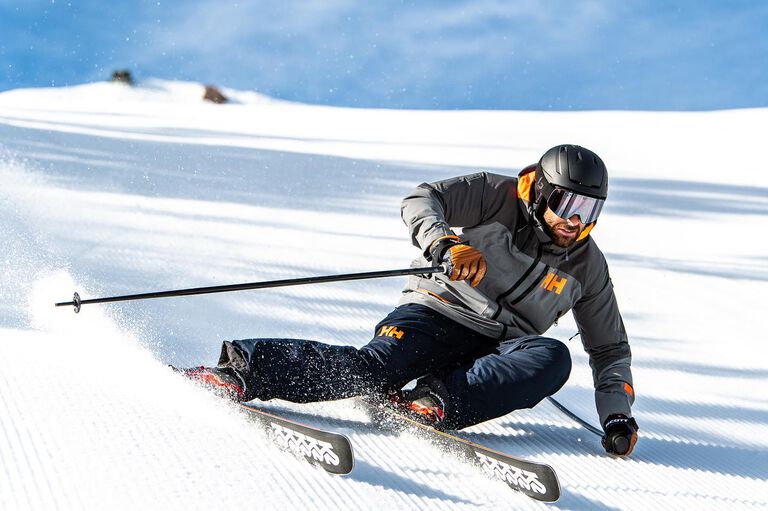
DIN RANGE
The German Institute for Standardization (Duetsches Institut für Normung), or DIN scale, refers to the standardized numerical range the ski industry uses to indicate release settings for ski bindings. The range, generally from 0.75-18, refers to the amount of force that can be placed on the binding before the ski boot will release. The higher the number, the more force it will take for the boot to release from the ski. Your DIN setting is determined by your height, weight, age, self-described skier type (1, 2, 3, or 3+), and boot sole length. Different bindings have different DIN ranges, so you will want to make sure that your DIN setting is included in the range of the binding you purchase. Most skiers will be able to use a binding that tops out at a DIN of 11 or 13. A certified binding technician will properly set your DIN when your skis are mounted, or bindings are adjusted. If you are unsure of whether your chosen binding will have the proper DIN range, consult with an expert at a Christy Sports location or chat with our customer service team.


